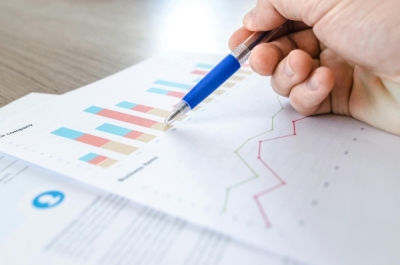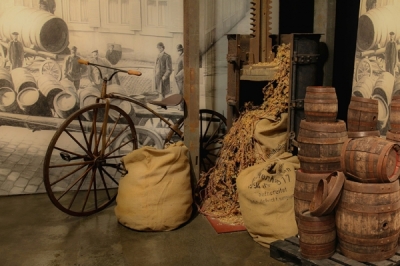History of Alcohol Policies in Brazil
History of Alcohol Policies in Brazil
Brazil is engaged in combating harmful alcohol consumption. Learn about our national policy.
According to the World Health Organization (WHO), having a written and specific national alcohol policy is the first sign of a country's commitment to combating the harmful use of this substance. Although a specific national alcohol policy only emerged in 2007 (Decree No. 6,117), general drug policies and laws have existed in Brazil for a long time. This material was developed by CISA with the goal of clarifying the long history of preparation and discussion on the topic.
The first mentions of substance regulation were already included in the Penal Code of the Empire of Brazil in 1851, although at the time it only covered the use and sale of medicines. The first prohibition appeared in the Republican Code of 1890, which imposed fines on anyone who sold or administered poisonous substances without a prescription, though it did not specify which substances. Brazil began enacting more specific drug laws in 1924 (Decree No. 4,294), in response to strong international pressure to control substance use. This included the addition of imprisonment penalties for those who sold opium or cocaine derivatives in the Penal Code. Within this context, Brazil joined the so-called “war on drugs” in 1971, with the creation of Law No. 5,726, in line with United Nations international conventions, aimed at repressing drug trafficking. In 1976, Law No. 6,368 expanded actions to include preventive strategies and support for drug addicts (1). Brazil’s current Constitution (1988) emphasized health as an essential condition for a dignified life, making it a fundamental right. This principle influenced the development of later drug policies.
In 2003, an interministerial technical group was created within the Ministry of Health, which in 2005 led to the creation of a Special Chamber on Alcohol Public Policy to increase public participation in the discussion. “This process enabled Brazil to develop a realistic policy, free from fundamentalist biases or trivialization of alcohol use, and consistently supported by epidemiological data, scientific advances, and respect for the country’s socio-political moment. The alcohol policy reflects society’s concern regarding the increasingly early use of this substance, as well as its negative impact on health and safety,” according to a publication from the National Secretariat for Drug Policies (2).
The issue of alcohol consumption was also addressed in the creation of the Fan Statute in 2003 (Law No. 10,671). Although it does not directly address alcoholic beverages, Article 13 establishes conditions for access and permanence in sports venues: “not to carry objects, drinks, or substances that are prohibited or likely to incite or enable acts of violence,” which potentially includes alcoholic beverages. While the law does not explicitly prohibit the sale, possession, or consumption of alcohol in stadiums, the express prohibition in Brazilian stadiums resulted from a memorandum of understanding between the Brazilian Football Confederation (CBF) and the National Council of State Prosecutors General.
In 2005, Brazil hosted the 1st Pan-American Conference on Public Policies on Alcohol, supported by the Pan American Health Organization. This led to the development of intercontinental policies and a recommendation for countries in the Americas to establish strategies and programs aimed at preventing and reducing harm associated with harmful alcohol consumption. Important changes followed, culminating in 2006 with the approval of Law No. 11,343, which “establishes the National System of Public Policies on Drugs (Sisnad); prescribes measures for prevention of misuse, treatment and social reintegration of users and dependents; sets rules for the repression of unauthorized production and illicit trafficking of drugs; defines crimes and other provisions.”
As a result of these discussions, in May 2007 Brazil adopted its National Alcohol Policy, which included intersectoral and comprehensive actions to reduce social, health, and life harms caused by alcohol consumption, as well as violence and crime associated with harmful use of alcoholic beverages. Up to that point, alcohol was included under general drug policies. However, because it is a legal substance with regulated commerce, it became necessary to create a specific policy distinct from those targeting illicit substances. The policy’s guidelines include:
- Diagnosis of alcohol consumption in Brazil;
- Treatment and social reintegration of alcohol users and addicts;
- Public awareness campaigns on the consequences of misuse and abuse of alcohol;
- Reducing alcohol demand among vulnerable populations;
- Public safety;
- Alcohol and traffic;
- Training professionals and multipliers of information on health, education, labor, and public safety;
- Partnerships with municipalities to encourage local-level actions; and
- Alcohol advertising (2).
Subsequent complementary laws were created, particularly regarding traffic safety, due to the high rates of morbidity and mortality from drinking and driving. In 2008, Brazil amended the Brazilian Traffic Code through Law No. 11,705 (commonly known as the “Dry Law”), imposing stricter penalties on drivers caught under the influence of alcohol. Any detectable amount of alcohol became grounds for administrative penalties such as fines, vehicle seizure, and a 12-month suspension of the driver's license. Those with a blood alcohol concentration of 0.6 g/L or higher could also face criminal penalties (2). Additionally, the law prohibited the sale and serving of alcoholic beverages for on-site consumption along federal highways and adjacent areas with access to highways (excluding urban areas). In 2012, the Dry Law became stricter, expanding the types of evidence that could be used to prove drunk driving. On December 19, 2017, Law No. 13,546 was enacted, introducing harsher penalties for drivers who committed involuntary manslaughter or caused serious or very serious bodily harm under the influence of alcohol or other psychoactive substances that cause dependence.
In 2009, the federal government launched the Emergency Plan to Expand Access to Treatment and Prevention of Alcohol and Other Drugs, incorporating such services into Brazil’s Unified Health System (SUS). Support was further expanded by Ordinance 3088 (December 23, 2011), which enabled access to the psychosocial care network for users of alcohol and other drugs.
On March 17, 2015, Law No. 13,106/2015 was enacted, making it a crime to offer alcoholic beverages to minors, whereas previously it was only considered a misdemeanor.
As we have seen, the development of Brazil’s national alcohol policy followed a complex and intense trajectory and has led to important progress in preventing harmful use and supporting individuals with alcohol dependence, as well as in making laws more appropriate and specific. The current model is based on educational measures to warn about the effects of drug use and on community services for recovery and social reintegration of users. Finally, Brazil has committed to the WHO’s voluntary goal of reducing harmful alcohol consumption by 10% by 2025, and this set of measures aims to help the country meet that target.
References:
(1) Santos JAT, Oliveira MLF. Políticas públicas sobre álcool e outras drogas: breve resgate histórico. J Nurs Health, Pelotas (RS) 2012 jan/jun;1(2):82-93.
(2) Paulina do Carmo Arruda Vieira Duarte, Carla Dalbo




